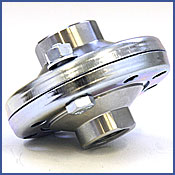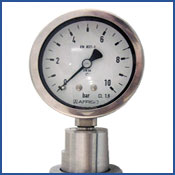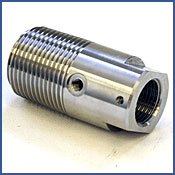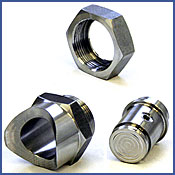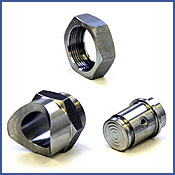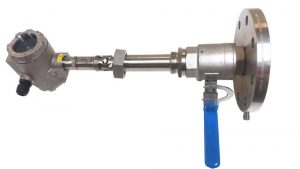Diaphragm Seal
Diaphragm seals are used to ensure accurate and reliable pressure measurement even under extreme conditions. By isolating the pressure sensor from aggressive media, high temperatures or high viscosities, diaphragm seals protect the instrumentation and improve service life. This technology is particularly suitable in applications where hygiene, safety and precision are crucial, such as in the food, chemical processing and energy industries.
Our pressure transmitters offer a wide range of diaphragm materials and process connections to adapt to specific requirements in different industries. Whether measuring pressure in corrosive liquids, high-viscosity media or sterile environments, our solutions provide optimal functionality and durability. Innovative design and advanced material choices ensure our pressure transmitters deliver accurate results, even in the most challenging applications.
- System Solutions
- Gas Analysis
- Liquid Analysis
- Flowmeters
- Pressure Gauges
- Level Gauges
- Temperature Gauges
- Laboratory Analysis
- Data Loggers
- Regulators
More information
What is a print intermediary?
A printing intermediary (also called membrane mediator or diaphragm seal) is a mechanical intermediate component mounted between the process and a pressure instrument (e.g. pressure gauge, pressure sensor or pressure transmitter). The diaphragm in the intermediate separates the instrument from the medium to be measured and transmits the pressure via a filled liquid to the sensor. This allows aggressive, viscous, crystallising or very hot media to be measured without the risk of destroying or contaminating the instrument.
Why are they used?
| Purpose of the programme | Example of situation | Effect |
| Corrosion protection | Acids, lye or seawater | The instrument is not directly exposed to the medium. |
| Hygiene & cleaning | Food, pharmaceutical, CIP/SIP processes | Smooth membrane surface without dead spaces meets hygiene standards. |
| High temperature | Steam > 150 °C | Heat is not transferred to the sensor element. |
| High viscosity / particles | Sludge, glue, polymers | The membrane prevents clogging of the sensor. |
| Personal security | Toxic or explosive gases | Leakage does not lead directly to the environment. |
How to choose the right printing intermediary
- Characteristics of the medium - corrosivity, viscosity, risk of crystallisation.
- Temperature & pressure - dimensioning both membrane thickness and filler fluid.
- Cleaning requirements - hygiene standard (EHEDG, 3-A, FDA) or the possibility of CIP/SIP.
- Mounting space - make sure that the intermediary does not cause mechanical stress on the sensor.
- Response time - long capillary tubes and high viscosity of the filling fluid result in slower response.




